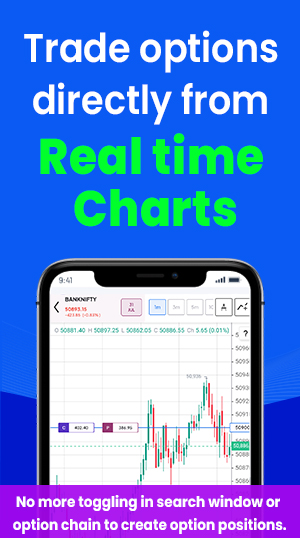Making intraday trading profitable is one of the biggest challenges for traders, especially for new or inexperienced traders. However, there are various tools, techniques and technical indicators that you can use to analyse the stocks for intraday trading. Maybe you are aware of most of the tools and techniques or indicators, but a few indicators or data interpretation tools are also very useful while analysing the stock for intraday trading.
Also Read: How to Select Stocks for Intraday: 10 Tips to Pick Best Stocks
Market Depth is one of the important theories in the stock market, may you have heard about this concept but don’t know what exactly it is, how it works, and how to read this and use it for trading or intraday trading. Today, in this article we are going discuss every aspect of market depth with examples, how to understand this or read or see on the chart and most importantly how to use market depth for intraday trading or trading.
What is Market Depth in the Stock Market Trading?
Market depth, which is also known as depth of market refers to the capability of the market to absorb the market orders that are relatively large in size and the price of the stock is not affected that much. In simple words, market depth means the over all breadth of open orders that includes the bids and asks price and quantity of individual security.
Also Read: Top 10 Things You Should Know Before the Stock Market Opens
If there are more buy and sell orders, it shows the depth of the market is greater or high showing the orders are well spread with the current market price of the security. A fair market depth means the demand and supply of shares in the market is high showing its liquidity level making it easier for the traders to buy or sell even in large quantities at market price.
How to Understand Market Depth?
Understanding the market depth is not only crucial for the traders but it is also very useful to assess the level of liquidity and volume in the trading of security. A high volume, means a large number of trades are taking place quickly, and that is thanks to high market depth. The orders from both sides bid and ask are executed due to the balance between the buyers and sellers.
To understand the market depth, you have to check the order book of the stock. There you can see the list of pending orders to buy and sell the stock at various price levels. However, at any point in time, there may be an imbalance of orders due to large quantities that can create volatility in the price of the security, even if the stock already has a high trading volume.
Also Read: Importance of Volume in Technical Analysis: Use & Role in Trading
Market Depth Example
Depth of market also shows the ability if shares of a company are bought or sold in large quantities the orders are executed without too much affecting the price of the security. When the stock is highly liquid, a large number of buyers and sellers putting orders, even the bulk orders is not able to move the stock with significant price change.
To understand let’s take an example, suppose a company XYZ is trading on the stock exchange with high volume and liquidity. If you check the current quotes or top 5 bids and ask price of the XYZ share having bid price at Rs 100 with 1000 quantity and ask price at Rs 105 with 500 quantities.
Apart from these top bids, you can also see the top four quotes with a bid price of Rs 95 but only 10 quantities of shares. However, in another bid, you can see 20,000shares at a bid price of Rs 90, so would you sell your 5000 XYZ shares at a market price where no seller is available at a market price of Rs 100 with this quantity or sell your 5000 shares at Rs 90?
No doubt you would choose to sell at the lower price if your large order is not able to execute the market price, but here when you sell your 5000 shares at a lower price (at Rs 90) it will bring down the market price of stock by more than 5%, that shows the depth of market is low. However, if the market depth was high, you could easily sell your large quantity of shares at the current market price and even not that much impacting the current price of the stock.
How to See or Read Market Depth Charts in TradingView?
Apart from your trading platform, you can also see the market depth on the TradingView. If you have an account on this charting platform, you can select any stock and check the market depth with the top five bids and ask prices. The market depth is visible during the market hours, and when the market is not running, only one bid and ask price is shown.
As there is no specific market depth indicator to see this data, you have to log in to your trading account select the stock and click on get quote option. It will show you the top 5 bids and ask for details with the total bid quantity and total sell quantity till that point of time. In TradingView you have to log in with your account and then you can see the market depth details. You can use the market depth to analyse the trading activities for intraday trading.
Also Read: How to Do Intraday Trading: Best Stocks, Charts & Strategies
How to Use Market Depth for Intraday Trading?
The market depth provides useful insight in trading a particular stock or index. Apart from the level of liquidity and volume of trade you can also see the trend in the market or use the bids and ask for details for the intraday trading purpose.
Using the Market Depth for Intraday Trading:
Identify the Trend in the Stock
You can use the market depth to see the trend in the underlying. When you check bid and ask price of a security, if the number of investor putting buying orders is high compared to sell orders in a particular stock it can be considered that the trend in the stock is bullish.
Also Read: How to Identify Trend in Stock Market: 10 Points to Find Trend
On the contrary, if there are investors placing more sell order quantity compared to the buying order quantity, the trend in the stock is bearish depending on time frame. Based on this trend and using other technical tools and indicators for intraday trading you canenter into the right trade position.
Also Read: How to Find Trending Stocks for Intraday Trading: Ten Rules
Understanding the Sentiment of the Market
The market depth shows the number of buyers and sellers standing in the queue with their buying and selling quantity that demonstrates the level of demand and supply of that stock in the market. The difference between supply and demand in the stock can easily tell you the current sentiment of the traders in that particular stock. Based on the positive or negative sentiment in the stock you can enter into the long or short trade position.
Also Read: How to Select Stocks for Intraday One Day Before: 10 Tips
Know the Level of Liquidity in the Stock
In intraday trading liquidity is one of the crucial factors to bet on the right stock and enter or exit in the trade position at the right levels timely. Market depth will help you to understand the liquidity levels, as high liquidity provides the best trading opportunity for large-quantity traders. The buy and sell orders are executed with nominal slippage.
Also Read: How to Identify Momentum Stocks for Intraday Trading: 8 Tips
Find out the Support and Resistance Levels
You can also utilize the market depth data to identify the potential support and resistance levels. When seeing the price data in market depth, if a particular stock is traded with a large quantity of shares at particular price levels this point can be considered as the support or resistance point.
You can use the support and resistance as an indicator to pick right execution point while entering into the trade position under your intraday trading strategy.
Also Read: Five Best Support and Resistance Indicators in TradingView
Market Depth Trading Strategy
The interpretation extracted from the market depth data can be used for trading or intraday trading. However, you can use this data for day trading with the following strategy.
Use for the Placing the Large Orders
As we have already discussed the market depth shows you the level of liquidity and volume of trade in a particular stock. Hence stocks with a high market depth mean you can place large quantity orders without concern of its execution. Stocks with low market depth can take time to execute the large orders or you have to compromise with price.
Also Read: Top 10 Different Types of Trading Strategies in Stock Market
Trade with the Minimal Slippage
Higher depth means that there are many buyers and sellers waiting to get into the trade. This also means that there is ample liquidity in the market for the stocks that has higher depth in market. Higher depth leads to very small or nil slippages for buyers and seller to place their orders. For intraday trading, it provides a wonderful trading opportunity with the least slippage.
Using the Liquidity for Trading
In intraday trading, speed and accuracy is the kingpin. Getting in and getting out of a profitable trade is expected by anyone. So for intraday trading, a trade need to choose a highly liquid stock, which can be known by analysing the market depth in the stock. A high market depth in the stock shows good number of market participants doing trades at various price levels. For intraday traders entering and exiting into the trade position quickly is very important.
Also Read: How to Decide Best Entry & Exit Points in Intraday Trading
Finding Stable & Less Volatile Stocks
In your intraday trading strategy using the market depth, you can find stable and less volatile stocks. Yes, when market depth is high there would be a high level of volume due to the large number of buyers and sellers in the market that makes the price more stable with no major swings.
On the other hand, when the market depth is low in the stock, it shows the low liquidity and even with the small orders there could be high volatility in the stock price. Hence, for intraday trading, you can use the market depth to check the price stability and volatility.
Also Read: How to Trade in High Volatile Market: Best Trading Strategies
Things to Consider While Using Market Depth for Intraday Trading
Using the market depth for intraday trading can be beneficial but there are certain things you should keep in mind while using such data. As there are various factors that work behind the movement of the market or for the individual stock. You can find below a few points that you should keep in mind while using the market depth for intraday trading.
Also Read: What are the Top Factors Affecting the Stock Market in India
Market Depth Keeps Changing
The market depth is the top five bids and ask prices with their quantity and it keeps changing every second, so you need to keep monitoring the same to make the best use of the data. Never use the market depth after trading hours, always check on a real-time basis to get the current market depth to make the right trade decision for intraday trading.
Accurate Data Interpretation
Many traders are not able to interpret the market depth data properly and use the same in their trade decisions. You need to be very careful while interpreting the market data and always check the bids and ask price details on real time basis to get accurate results.
False Signal or Flash Data
The top bids and ask prices shown in the market depth data are not necessary all the orders are executed as shown on the screen. In the meantime few orders are modified and even some of them are cancelled by the traders, hence it can give you false signals.
Also Read: 7 Biggest Mistakes To Avoid While Doing Intraday Trading
Use the Technical Indicators
Finally taking your trade decision purely based on the market depth data would be not useful or there is no guarantee your intraday trading would be profitable. Along with this depth of market, you also should use the technical indicators to get a better insight and view of trading opportunities in the particular stock to avoid losses and maximize your profitability.
Also Read: Top 5 Best Technical Indicators for Intraday or Day Trading
Final Thoughts
Market depth can provide you with useful insights with real-time trading data that you can also use for intraday trading. In market depth, you can see the top five bids and ask or buy and sell orders with their respective order quantities. In simple words, it shows the level of liquidity in the stock that is available in the market at various levels with nominal slippage.
For intraday trading, you can use the market depth to know the trend in the stock and market sentiment towards that stock. It will also let you know the level of liquidity and volume with real-time data of stock price at which more trades are taking place. And you can use this price as a support and resistance while entering into the trade position.
Also Read: Best Volume Indicators for Day Trading & How to Use for Intraday
To get accurate data of market depth you need the right online trading platform that can provide you the real-time data with the top five best quotes in all the listed stocks on various stock charges. You can choose Moneysukh to open a demat account and get the best online trading platform for intraday, short-term, F&O and delivery-based trading at the lowest brokerage.
Also Read: Features of Best Demat Account with Lowest Brokerage Charges in India

















